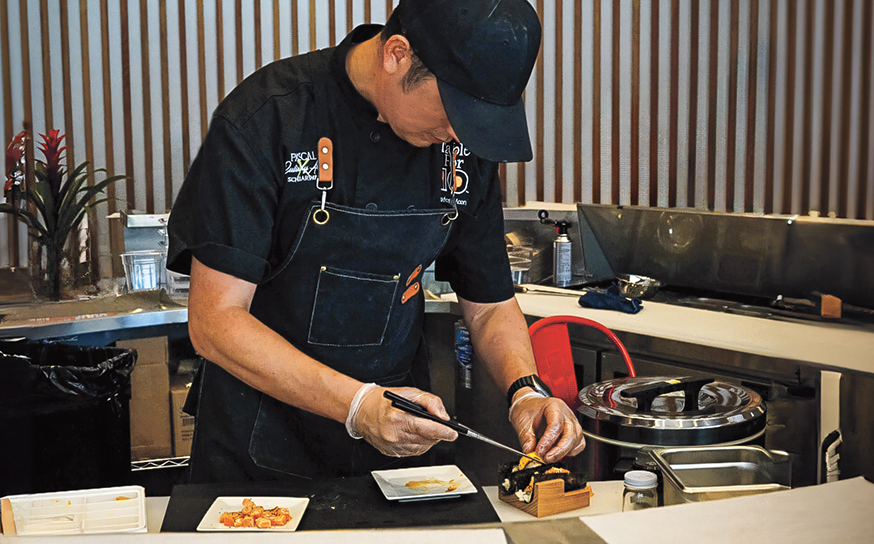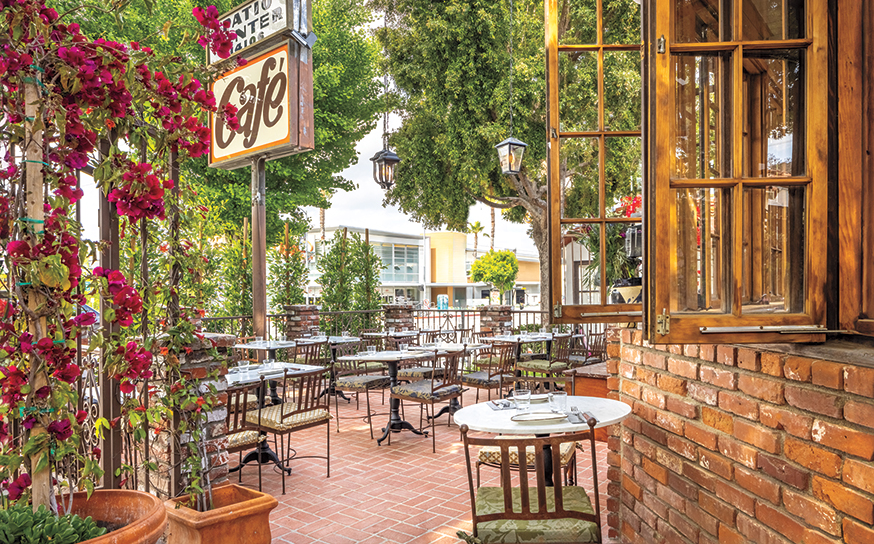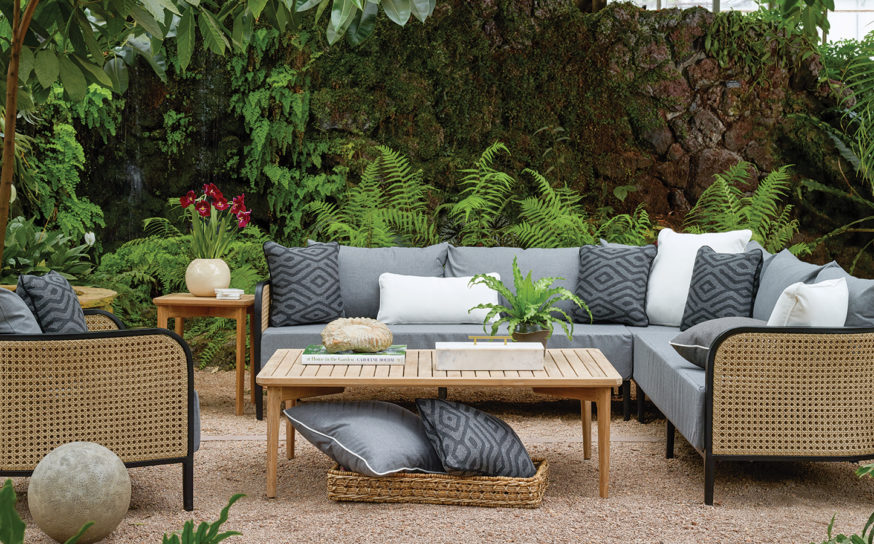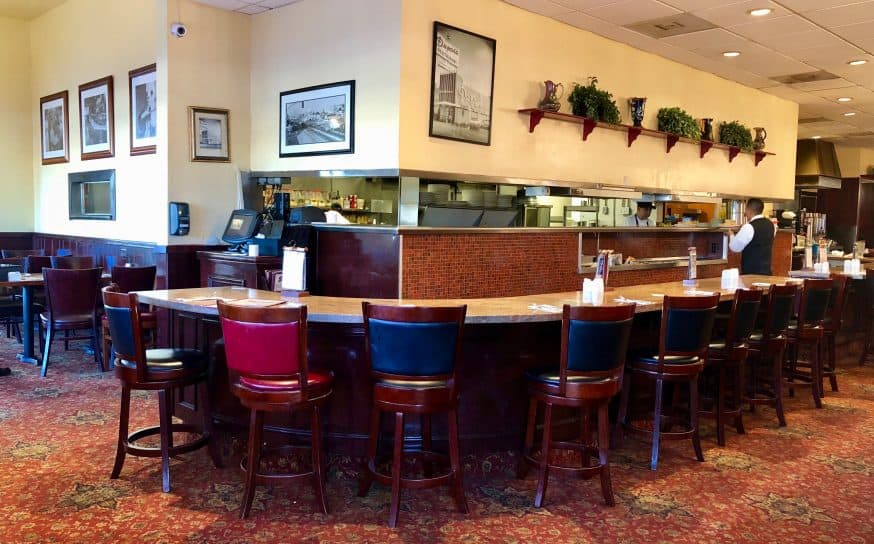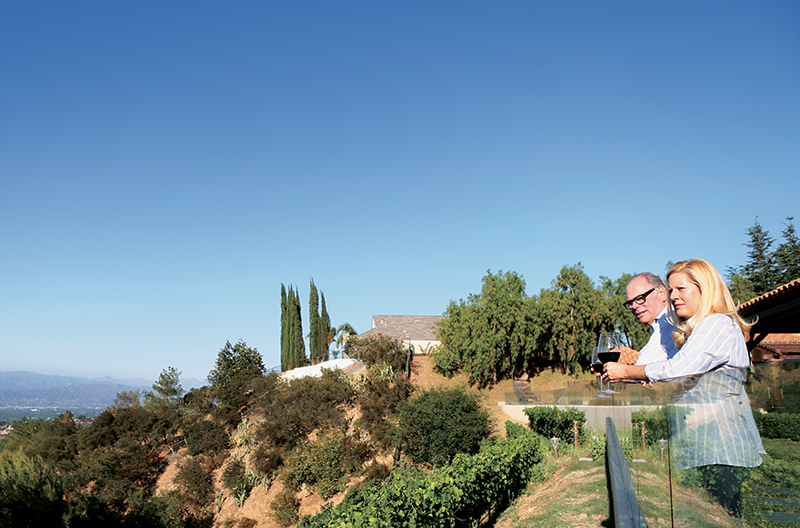
Encino? Holy Cow!
Overlooking the Valley, a Hollywood producer and his wife
become accidental, award-winning vintners.
-
CategoryEat & Drink, Homes, People
-
Written byRachel Heller Zaimont
Tina Caron tips her nose into a glass of viognier at her kitchen counter, and her eyes go far away for a moment. “It’s nice and light. There’s something smooth about it. I love that buttery finish,” she says.
If the flavor is precisely suited to Tina’s palate, it’s because she and her husband, TV writer and producer Glenn Caron, have spent countless hours fine-tuning the taste. The grapes were grown in the couple’s backyard high in the Encino hills after they planted a vineyard on a whim.
As it turns out the locale was fortuitously situated for viticulture. You could call it kismet, as they do—a message in a bottle.
Holy Cow wines have become a hobby, side-business and labor of love for the Carons. Now in their fourth year of production, the wines have garnered awards and accolades and built a strong statewide following. The couple attributes their success in equal parts to the expert guidance of a local vineyard consultant and the favorable growing conditions of their stunning hillside property.
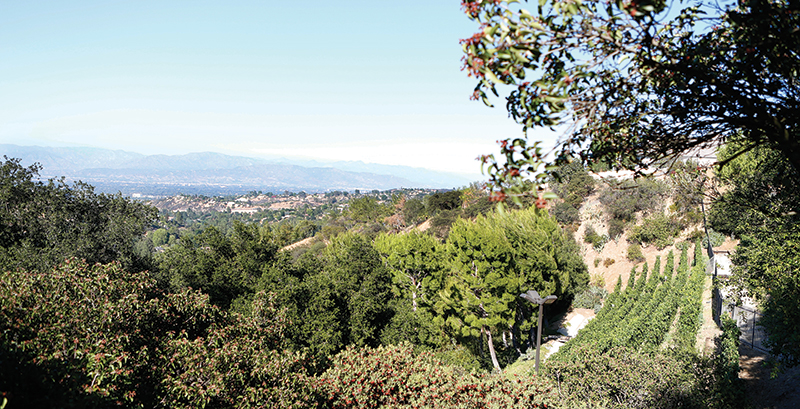
LAND MINE The grapes are planted on about an acre of the Caron’s hillside—a site that offers spectacular, 180º Valley views.
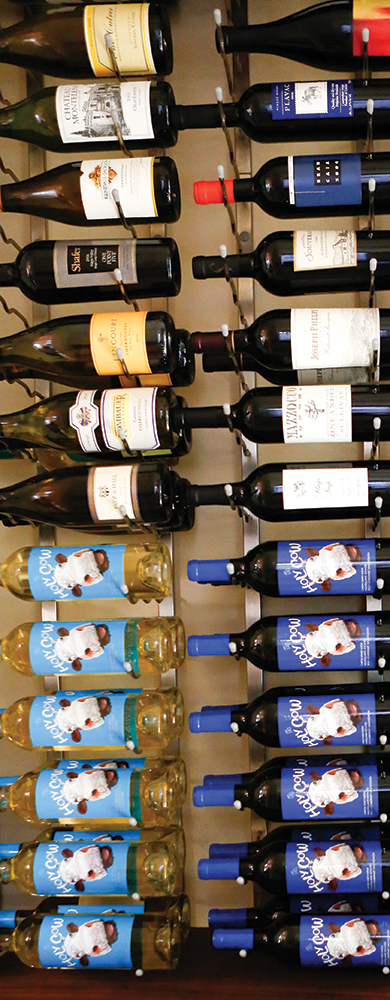 “It’s a very magical spot,” Glenn says, contemplating the rolling greenery of their estate on an overcast Saturday morning. “The view here is unbelievable. It’s good for growing grapes. We get all the benefits of the great climates on both sides of the hill.”
“It’s a very magical spot,” Glenn says, contemplating the rolling greenery of their estate on an overcast Saturday morning. “The view here is unbelievable. It’s good for growing grapes. We get all the benefits of the great climates on both sides of the hill.”
A vineyard might be the last thing you’d expect to find just off Mulholland Drive, the winding mountaintop road known as home to countless celebrities and showbiz executives as well as more than a half-dozen of LA’s ritziest private schools. Traveling west along the leafy corridor, dense foliage parts to reveal glimpses of long driveways and the occasional tennis court.
But tucked out of sight past an unassuming gate, the Carons have built an oasis on seven magnificent acres of land. Perched on a downward slope past the backyard, the one-acre vineyard boasts rows of healthy vines with striking views of the Valley unfurling below. A quiet stillness envelops the property, leaving the grapes to do their work.
If you ask the Carons how they came to winemaking, they both laugh. Just three years ago the pair knew very little about creating wine. “We knew a bit about wine drinking,” Glenn quips. “But we knew nothing about what we were doing other than, ‘Hey, wouldn’t this be fun?’”
Glenn is a TV veteran who created Moonlighting in the ‘80s, wrote and produced Now and Again and Medium, and currently executive produces Tyrant on FX.
They both agreed the property was beautiful when they first saw it some four years ago, but the house—built in 1990—needed work. So did the hillside. Originally the slope was covered with wild rosemary. The couple knew it attracted rodents, so they decided to pull it out.
“We started thinking, ‘What could we do with that space?’” Glenn recalls. “Honestly, kind of as a lark, one of us said, ‘Maybe we should put in a vineyard.’ But we had no concept of what that entailed.”
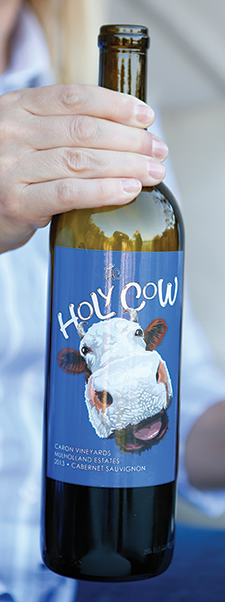 They began asking around and eventually got in touch with B. Alan Geddes, a vineyard manager and consultant who owns a winemaking facility in Westlake Village. B. Alan came out and looked at the Carons’ property. “He said, ‘I can’t guarantee you anything, but I’m willing to give it a try,’” Glenn recalls. They had their soil tested, but “it’s still always a bit of a blind date,” he adds.
They began asking around and eventually got in touch with B. Alan Geddes, a vineyard manager and consultant who owns a winemaking facility in Westlake Village. B. Alan came out and looked at the Carons’ property. “He said, ‘I can’t guarantee you anything, but I’m willing to give it a try,’” Glenn recalls. They had their soil tested, but “it’s still always a bit of a blind date,” he adds.
The Carons planted three grape varieties: viognier, cabernet sauvignon and merlot. B. Alan told them up front that it might take a few years before they could harvest the grapes, until the plants matured. But to their amazement, the first year yielded an extremely healthy harvest.
“The vineyard just took off,” recalls B. Alan, who has installed and overseen vineyards across Southern California with his company, Grape Expectations. “Most people don’t like to use the first vintage, but I saw no reason not to.”
Next the three met to taste the grapes and decide how best to process them: how long to age the wines, what type of barrels to store them in, whether to enhance the flavor with oak sticks. Gradually, after researching all of their options, they set goals.
Tina had strong opinions about the white wine. She wanted to turn their viognier into a lighter version of a chardonnay, with the same smooth finish. To do this, she decided to put the wine through a secondary malolactic fermentation process, which isn’t often done.
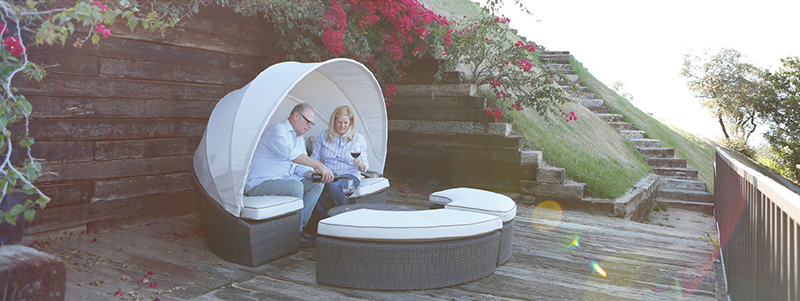
“It creates this nice marriage of a really light, French, somewhat fruity wine, with butter,” Glenn says. “When Tina first said, ‘Hey, I’d like to try this with the viognier,’ the initial response was, ‘People don’t do that to a viognier.’ And she said, ‘Well, you know what, we’re here to have fun and figure things out. Worse comes to worst, we’ll try it and if we don’t like it, we’ll throw it away and no one will ever know.’ Luckily, it turned out wonderfully.”
B. Alan supports the couple’s playful approach. “They’re not in a grape-growing region of California—this isn’t Paso Robles, it isn’t the Santa Ynez Valley,” he says.
“They’re in Mulholland, and there are no other vineyards in that area. So I told them it was a grand experiment.”
Spurred by the positive reaction to their product, Tina and Glenn decided to enter Holy Cow’s 2012 wines into the San Francisco International Wine Competition and the California State Fair Commercial Wine Competition. Expectations were tempered.
Yet the two reds ended up winning silver in San Francisco, and all three won bronze at the state fair. They also picked up silver for Tina’s quirky bovine label design.
Tina, an actress with a background in children’s clothing, originally designed a traditional label, then switched gears. “I just wanted something more contemporary—something fun, because the vineyard is for fun,” she recalls. Browsing through clip art, she alighted on a comical image of a cow. She and Glenn latched onto it immediately.
“We thought, ‘Holy Cow—that’s it!’ It’s like, holy cow, we can’t believe we have this vineyard right here in LA, on our property,” she says.
Winemaking might be the Carons’ hobby, but it’s also hard work, marked by seasonal patterns. In January the vines are pruned back and then sprayed to keep pests away. Through the rest of the winter and spring, the grapes are left to grow.
As the grapes ripen, netting is placed over the vines to protect them from foragers. Last year raccoons ate about one-quarter of their grapes.
The grapes are harvested in late summer, then taken back to B. Alan’s winery and stored. Around December he and the Carons do a taste test. They might decide to adjust the flavor—add more oak sticks, take some out. Then they bottle the wines.
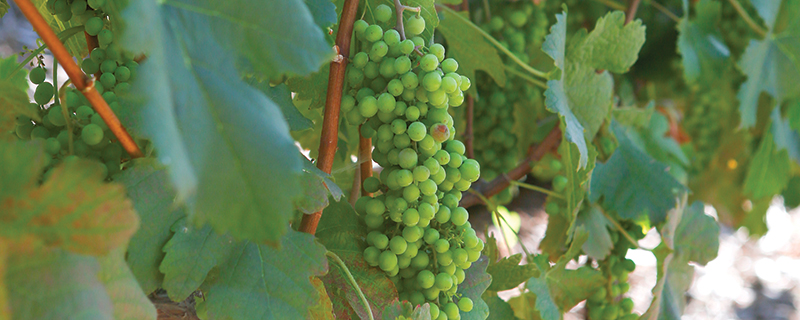
Altogether, the Carons’ vineyard yields about 140 cases of wine per year. They are now on their fourth crop and are pleased with the products’ reception.
“These first four years have been about making the wines,” Glenn says. “The longer you hold onto a wine, the better it gets. There’s been no rush to get it out the door. So we’re only beginning to explore our options in terms of getting it out to the public.”
In the meantime, the Carons are still navigating the ups and downs of owning a vineyard in an unlikely spot. Once, police officers showed up at their gate, thinking they were operating a bar because of their alcohol license.
Glenn and Tina can hardly believe it themselves. “I keep waiting for someone to knock on the door and say, ‘Get out of town,’” Glenn jokes. “We would never have imagined this. It truly was a function of necessity—what are we going to do with this hill? Had the wine not worked, who knows what we would have done next?”
But the couple feels Holy Cow is a fateful venture, and its surprising success is proof they are on the right path. “I think we’ve been lucky from the beginning,” Tina says. “It was meant to be.”
For more: www.caronvineyards.com





